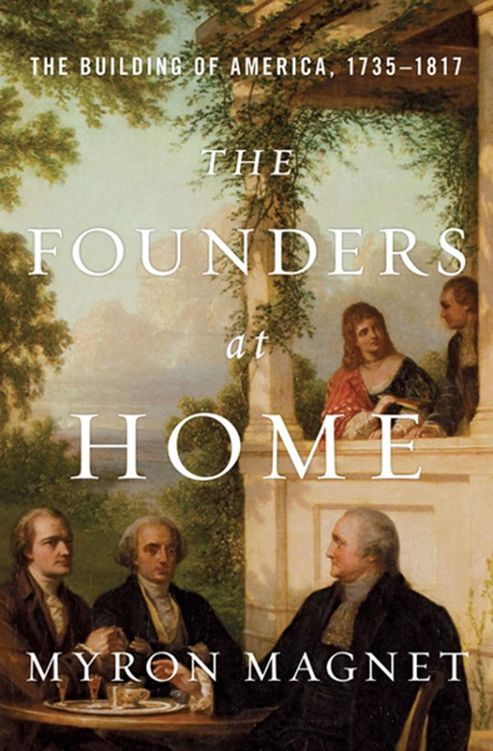
The Founders at Home
The Building of America, 1735-1817
- اطلاعات
- نقد و بررسی
- دیدگاه کاربران
نقد و بررسی

September 2, 2013
The founders of the American republic distinguished themselves by making political change without altering their nation’s economic structure and by setting strict limits on government. Journalist Magnet (Dickens and the Social Order) ploddingly retells tales of the earliest years of the republic, through brief biographies of founding figures George Washington, John Jay, Alexander Hamilton, Thomas Jefferson, James Madison, New Jersey Governor William Livingston, and the Lees of Virginia. Magnet shows how each founder’s ideas about the structure of the new republic grew out of, and informed, his home life and the houses he constructed. “Because they were trying to create a new nation where Americans would be truly at home, the houses they themselves inhabited... offer a vivid glimpse... into the ideal of life they imagined for themselves and for their countrymen.” To walk through Jefferson’s Monticello “is to feel oneself in a microcosm of Jefferson’s conception of the universe, a complex order whose parts mesh precisely, as one sees once one grasps the plan.” Regrettably, Magnet merely tacks on material about the most fascinating aspects of the design and construction of these founders’ houses, leaving us to wade frustratingly through dull accounts of familiar stories.

October 1, 2013
Why did the American Revolution turn out so well? Across the world and throughout history--from France to Russia to China and elsewhere--revolutions have usually descended into tyranny and bloodshed, but America has enjoyed stability, freedom and prosperity. Historian and City Journal editor Magnet (Dickens and the Social Order, 2004, etc.) delivers the answer in this collection of biographies of our Founding Fathers, describing their ideas as well as--for no clear reason--their homes. The usual immortals--Washington, Jefferson, Hamilton and Madison--take up most of the text. Readers may puzzle over the absence of John Adams and Benjamin Franklin and the inclusion of second-level figures such as William Livingston, John Jay and the Lees of Virginia, but it is this selection, rather than their straightforward biographies, that supports the author's argument. Historians agree that America's founders aimed to restore what they viewed as traditional British freedoms being trampled by George III and his administration. Magnet stresses that eschewing abstract theories and sticking to narrow political goals ensured their success, adding that subsequent revolutions in other nations aiming to create a new social and economic order ended badly. Readers will now understand the absence of Adams and Franklin. All of the author's founders belonged to the upper-class elite--or, in Hamilton's case, identified with it--so social revolution held no attraction. Since America was more prosperous than even Britain and lacked an underclass, pressure for an economic revolution was low. Mildly quirky but well-argued. It's not controversial that American revolutionaries sought only liberty, not equality or fraternity, and Magnet is happy to point that out.
COPYRIGHT(2013) Kirkus Reviews, ALL RIGHTS RESERVED.

October 1, 2013
The Founding Fathers have provided plenty of fodder for fiction and nonfiction alike. In this series of biographical sketches, Magnet has taken a different and wholly original tack. In addition to reviewing what this group of luminaries said and wrote about the concepts of life, liberty, and the pursuit of happiness, he also shows how they lived and how the homes they designed, cherished, and inhabited reflected the values and ideals they claimed for themselves and desired for their fellow countrymen. Individual profiles of William Livingston, Arthur Lee, Henry Lee, Richard Henry Lee, George Washington, John Jay, Alexander Hamilton, Thomas Jefferson, and James Madison also include detailed descriptions of their hearths and homes. This collective biography has crossover appeal, featuring enough new information to satisfy both Revolutionary-era enthusiasts and architectural buffs.(Reprinted with permission of Booklist, copyright 2013, American Library Association.)




دیدگاه کاربران